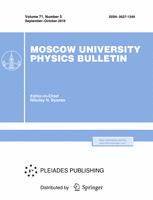The article presents the results of computer simulation of the SH-synthesis of nickel aluminides in four model matrix structures, each of which is characterized by a homogeneous composition of identical core-shell composite nanoparticles. The first two structures contain nanoparticles that do not contact each other (the first contains Ni@Al nanoparticles, the second contains Al@Ni nanoparticles), while the next two structures contain nanoparticles that do contact each other (the third contains Ni@Al nanoparticles, the fourth contains Al@Ni nanoparticles). For each of the four structures, the temperature dependences of nanoparticles on time, the results of CNA-, AJ- and PTM-analyses for the recognition of certain types of elementary crystal cells in nanoparticles, as well as maps of the recognition of intermetallic phases in nanoparticles at certain points in time are presented. It is shown that for two structures with nanoparticles not in contact with each other, the spherical shape of the nanoparticles is practically preserved during the SHS process, while in two structures with nanoparticles in contact with each other, their shape changes. Additionally, in the structure with Al@Ni nanoparticles in contact with each other, a structural phase transition with a temperature jump to the peritectic transformation temperature of 1669-1670 K was detected during the SHS process, at which rapid crystallization of the Ni3Al phase from the melt and recrystallization of the NiAl phase into the Ni3Al phase occurs. To simulate the SHS process, the LAMMPS software package in a parallel version and the EAM potential of interatomic interaction compatible with it were used, and to visualize the results, the OVITO software package and the authors' own program were used.
61.50.Ah Theory of crystal structure, crystal symmetry; calculations and modeling
65.80.+n Thermal properties of small particles, nanocrystals, and nanotubes
81.20.Ka Chemical synthesis; combustion synthesis
$^1$Altai State University



